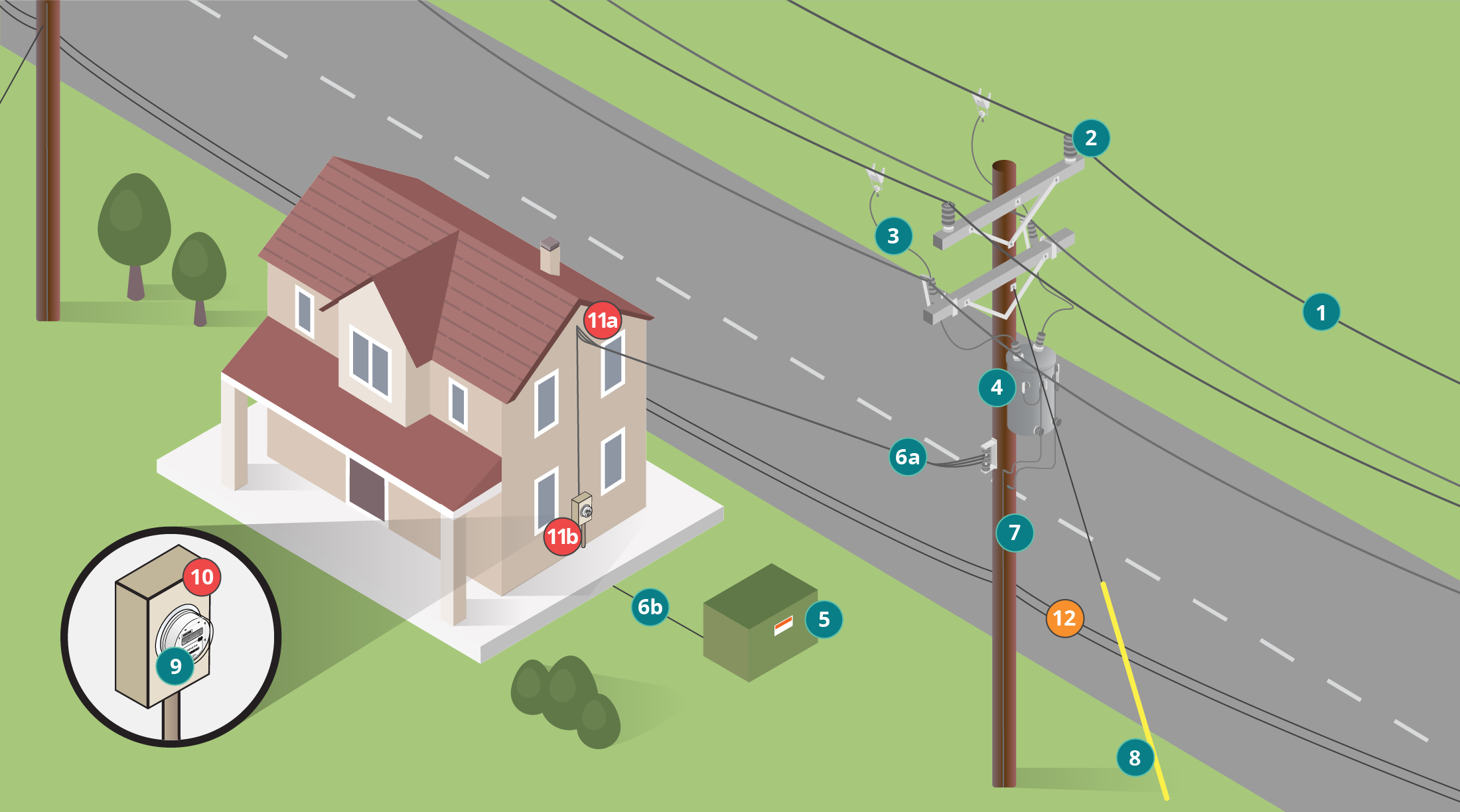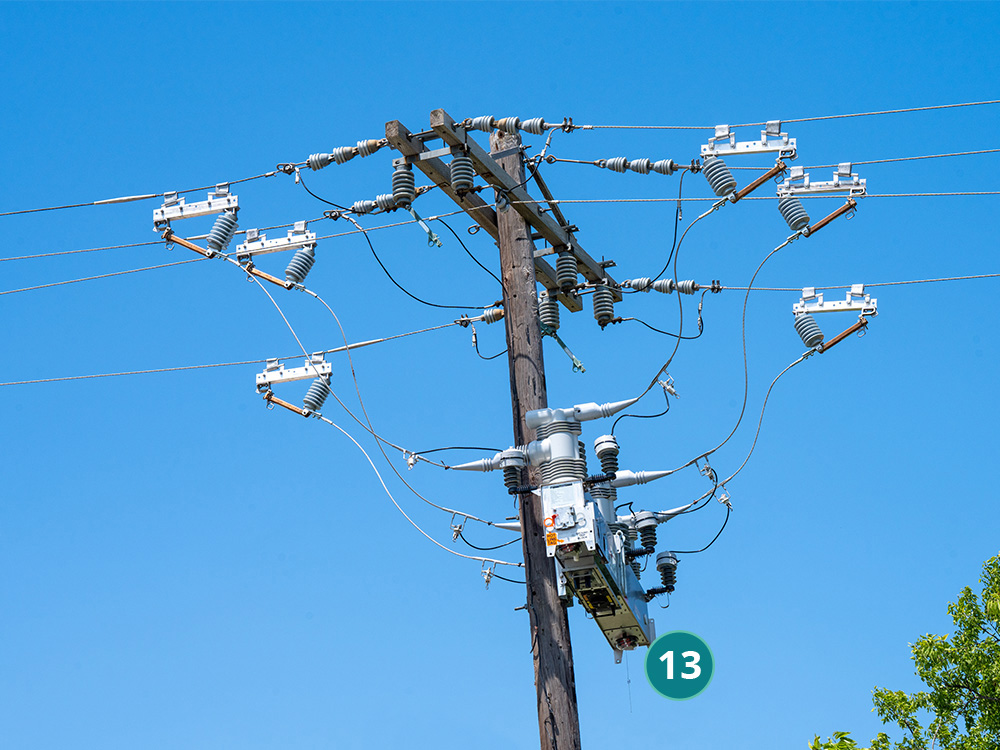Power Pole Anatomy
Power lines are part of the landscape in many cities, running alongside major roads in neighborhoods and city centers. But did you know that power poles can have more attached to them than just power lines?
Communication companies often run their phone or cable lines on preexisting poles. But how do you tell the difference, and why does it matter?
Electric lines will often be higher up with insulators that prevent electricity from contacting the pole. In comparison, telecom lines will be lower without insulators.
Often, we get reports of trees touching or drooping lines where the lines in question belong to telecom companies. CoServ does not operate or maintain telecom lines; any issues with those should be reported to the phone or cable provider.
If you see a downed line but are unsure what type of line it is, always assume it's a live power line and call 911 and then our emergency line 844-330-0762 immediately.

CoServ Owned
CoServ owns, maintains, and operates the equipment marked in teal in the image above.
Member Owned
Everything marked in red in the image above belongs to the property owner and is their responsibility to maintain.
TeleComm Owned
Telecom lines, marked in orange in the above image, will be the lowest on the pole and do not require insulators.
Who owns what?
When it comes to the electrical equipment that serves your home, it can be challenging to know where CoServ's equipment ends and the property owner's responsibility begins. Below, we'll break down a typical residential setup and discuss the equipment and infrastructure that powers it.
- Primary distribution line - Primary power lines carry high-voltage electricity from the nearby substation to the transformer.
- Insulators - Insulators are made of materials that do not conduct electricity and are used anywhere a live conductor does or could contact a non-insulated surface. This enables linemen to safely connect the wires to the pole.
- Fused Cutout - Designed to isolate an outage if there is a fault at the transformer.
- Transformer - Transformers are used all over the electric grid to convert electricity to different voltages. The ones that you see on the poles decrease voltage from the primary wires to the power used in your home. Transformers can also be housed in a steel box on the ground if the electric service is connected underground.
- Padmount Transformer - a ground-mounted electric power distribution transformer in a locked steel cabinet mounted on a pad. Click here to learn more about Transformer safety.
- Service wire - Service wires can be overhead (6a) or underground (6b). For overhead service, they distribute electricity from the pole-mounted transformer to the home. For underground service, they distribute electricity from the pad-mounted transformer to the home.
- Ground Wire - runs the length of the pole and connects to the neutral wire to direct electricity from lightning safely into the earth.
- Guy wire - a tensioned cable or wire used for structural support. Guy wires often feature strong galvanized steel wires to bear high tension. Throughout many industries, professionals utilize guy wire to brace, guide or secure various tall, human-made structures.
- Meter - Measures your electricity use in kilowatt-hours.
- Meter Socket - Your meter is mounted in this box.
- Point of Delivery - For Members with overhead service lines, the Point of Delivery is where the service wire connects to the house (11a). For Members with underground service, the Point of Delivery is where the service line connects to the meter (11b).
- Tele Communications Distribution Line - When attached, these are typically the lowest wires on the pole.
- Intellirupter (on some lines) - used to dramatically reduce the number of members on a circuit that experience an outage. Also gives System Operators visibility and operability of the distribution system.
If you experience power fluctuations or power blinks, please use your SmartHub account to report a partial outage. Provide details in the comments section.

Additional Resources
How to Report an Outage
- Log in to your SmartHub account
- Click on Report Power Outage in the left sidebar navigation pane
- Accept Terms and Conditions
- Select one of the following options from the "Outage Description' drop-down menu
- Total loss
- Partial loss
- Pole/Line Down
- All other
- Additional comments (not required)
- Submit form
- Call 855-938-3496 to report an electric outage.
- Call 844-330-0763 to report a gas outage.
- Enroll in text messages within your SmartHub account service notification settings.
- Text OUT to 855-938-3496 to report an outage.
- Text STATUS to get an update on the estimated restoration time.
Once enrolled, a message will be automatically sent when an outage is detected at your service address. You will receive a message when power has been restored.
Tip: Add CoServ to your contacts for quick reference!
Note: This is a text-only number.
